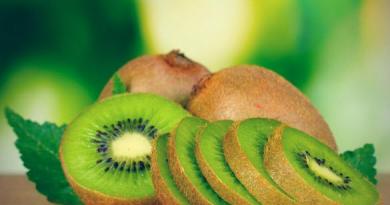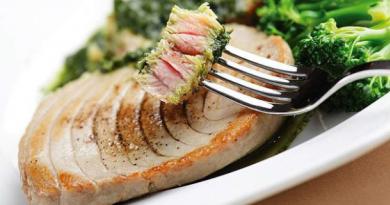Pike has been considered a festive dish and delicacy since the times of Ancient Russia. It was this fish that was invariably present during feasts or mass feasts. The beneficial properties of pike have not been forgotten even today, especially since its taste is very pleasant, and its value has not decreased at all. Is it worth it to buy, how to choose and cook? You will learn about this by reading the article.
Interesting fact: The habitat of this fish is the reservoirs of Eurasia and North America, and environmental conditions are not particularly important for it. The life expectancy of a pike can be more than half a century. These predators are incredibly voracious individuals. Their main food is perch and roach.
Chemical composition
The nutritional value:
- Calories: 84 kcal
- Proteins: 18.4 g
- Fat: 1.1 g
- Water: 79.3 g
The composition of pike is surprising even for nutritionists. Fats account for only 1 percent, the remaining 99% are:
- water;
- easily digestible proteins;
- vitamins - A, C, PP, E, B;
- minerals: molybdenum, nickel, fluorine, chromium, cobalt, iron, iodine, zinc, copper and manganese.
The nutritional value per 100 g of the product is only 84 kcal, and only in fried form does the indicator reach 122 units.
Beneficial features
With regular use, pike has a beneficial effect on the human body as a whole, helps to strengthen both male and female health. Among all the useful properties of this fish are:
- Antiseptic action and strengthening.
- Strengthening the vascular system and stabilizing the work of the heart.
- Normalization of blood glucose levels and restoration of the nervous system.
- Beneficial effect on the condition of the skin and mucous membranes.
- Support for the thyroid gland and other organs of the endocrine system.
On the basis of this product, effective "working" diets for weight loss with a quick and at the same time long-term result are compiled. All this is due to the fact that pike fillet promotes the breakdown of fats, the rapid absorption of protein and the removal of excess fluid from the body.
Important! The use of pike during pregnancy is not desirable, especially if it is caught in small lakes and streams. Due to the rampant pollution of such reservoirs, the fish that live there contain a high percentage of mercury, which is not particularly good for the body of the expectant mother.

Possible harm
Although this fish is healthy and tasty in any way of preparation, it does not hurt to be careful. As mentioned above, pike survive even in the worst conditions, and caught in a polluted reservoir, it will do more harm than good. It is better to buy fish from trusted suppliers or, if you have the opportunity and desire, to catch it yourself in a trusted place.
It should also be remembered that individual intolerance can also serve as a contraindication to the use of pike.
Pike can be cooked in various ways: fry, boil, stew, bake in foil. Garnish and seasonings can also be different. Fish goes well with any vegetables, many types of cereals and sauces.

So that the taste of the cooked dish does not disappoint, you need to choose and cut the carcass correctly:
- Note the color of the gills - they should be bright or dark red, free of odor and mucus.
- Pay attention to the eyes - they should not have whitish spots.
- Inspect the carcass, fresh fish - clean, shiny, without mucous secretions.
- If there is a specific river smell, it can be removed by spraying the fish with lemon juice.
- It is better to clean the carcass immediately after purchase - the longer it lies, the more difficult this process will be.



